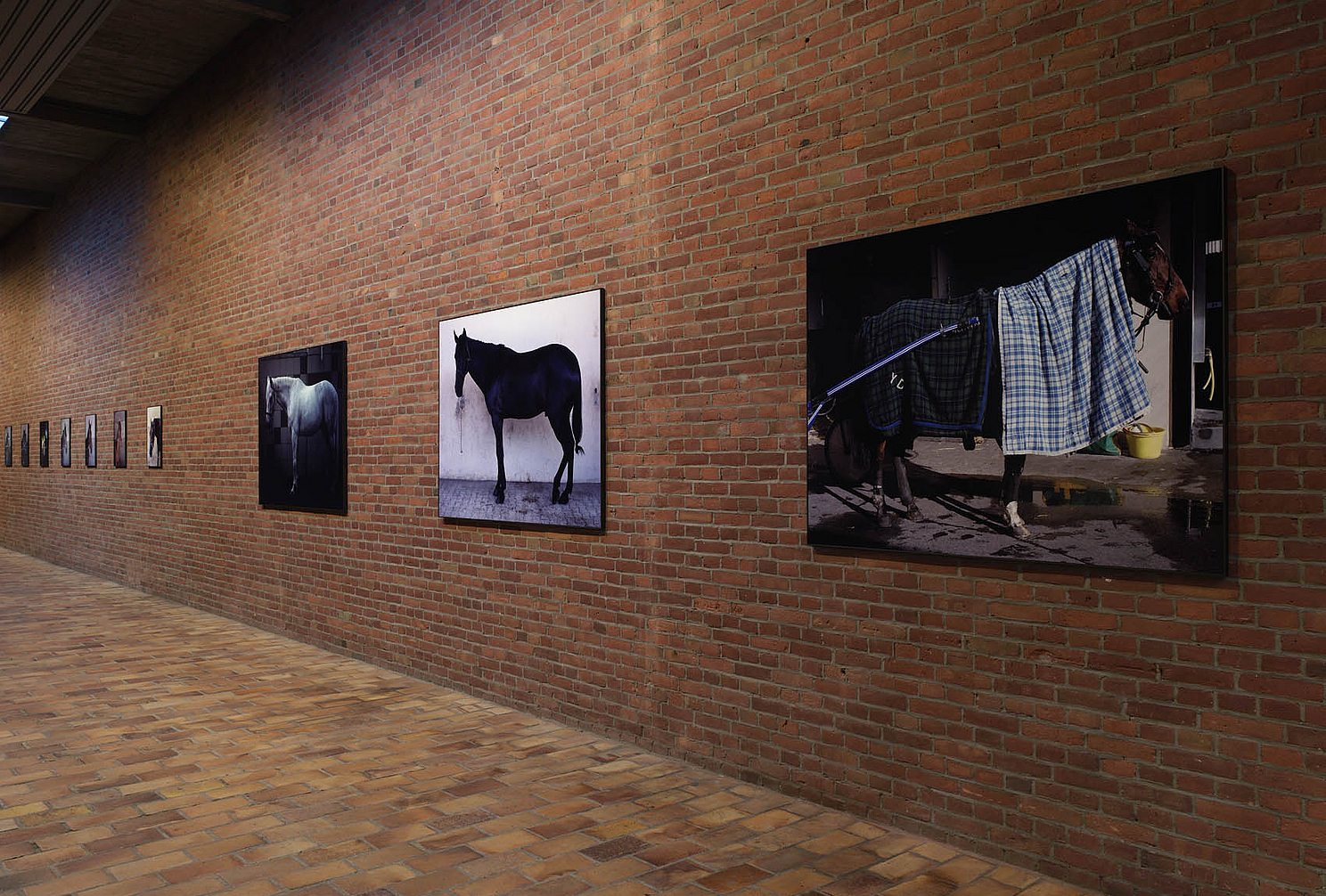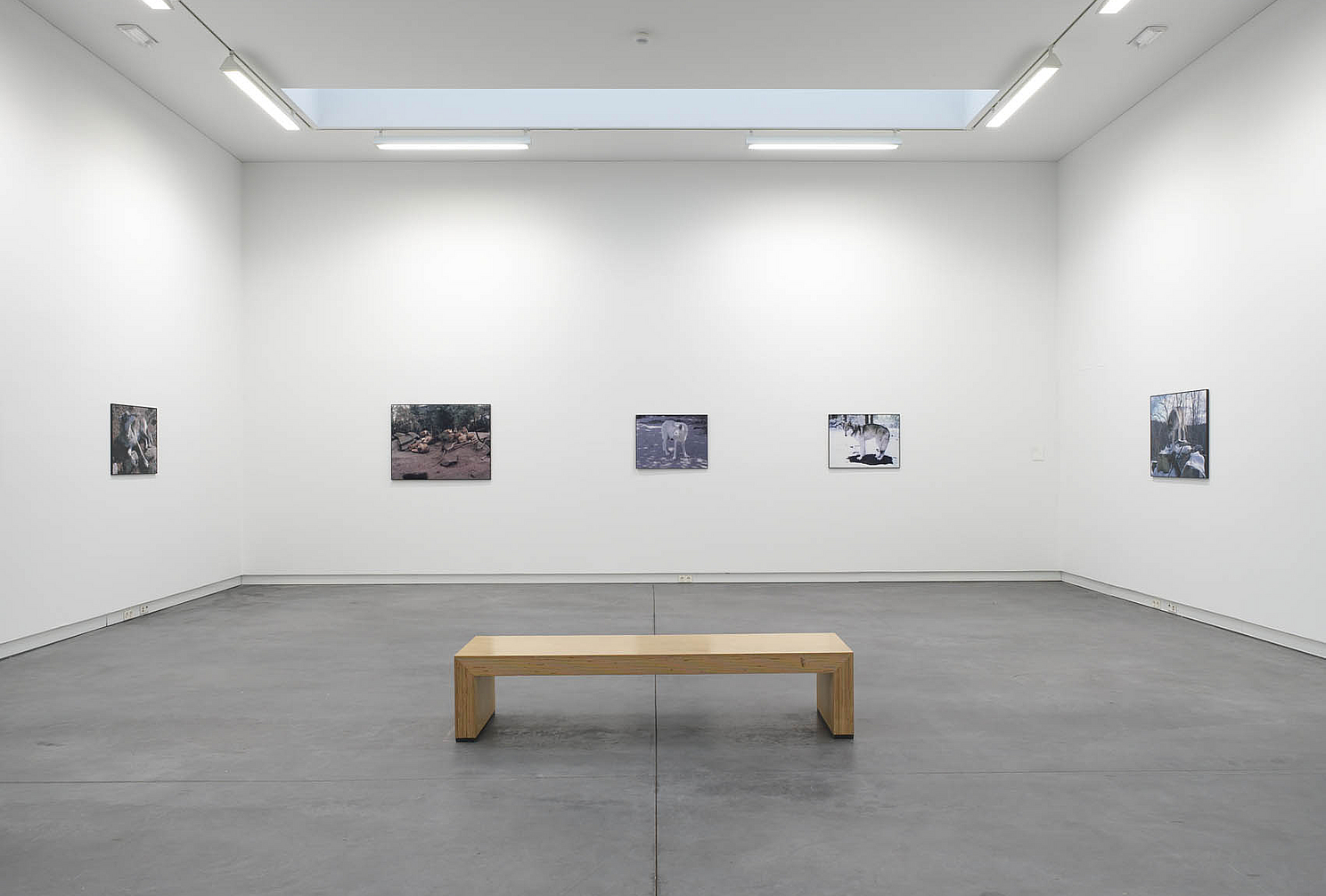The exhibition Rêverie consists of two recent series of photographs by Charlotte Dumas (Vlaardingen 1977). In the series of ‘portraits’ made in the stables of racetracks in Paris and Palermo during the early part of 2006, Dumas focused on the horse, an animal that appeared in her work at an earlier stage as well. For the other series being shown, she travelled to reserves in Norway, Italy, Germany and the United States over the past year. In these photographic portraits, she has portrayed the wolf.
Animals are a well-liked subject in our visual culture, but in the context of visual art they are hardly considered a serious theme. In defiance of this supposed triviality, Charlotte Dumas has made police dogs, horses and now wolves the subject of her photography since graduating from the Rietveld Academie in 2000.
Not a trace of irony or sentimentality can be found in her work. Characteristic of her approach is the unbiased concern with which she portrays her subject. The sizes of the photographs are substantial, yet not so large that intimacy is lost. The animals are placed centrally and monumentally on the image surface, in poses that precede or follow the action. We see a full focus on their stance, on the softness and the nuances of color in their coats or the relief of veins on glistening skin. These are quiet images, which seem to elude the momentary quality of the ‘here and now’ due to their setting and incidence light.
Dumas takes her inspiration more from painting than from photography. Delacroix and Géricault are the shining examples for her. She is fascinated by the way in which these artists have portrayed horses – heroically and tragically, as passionate and dedicated creatures. Like these painters, Dumas is primarily interested in the eloquence of the image. In addition to the cropping and the pose, she employs light as a means of achieving this in her photographs.
With the 2004 series Day is done she showed the horses of Rome’s mounted police in all their vulnerability, in the nocturnal darkness of the stables. The series now on view remains closer to the traditional horse portrait. But due to the recurrent motif of the ropes and chains that restrain the animals, as well as the halters and brightly colored covers under which the horses are sometimes almost entirely concealed, the photographs acquire connotations that differ greatly from those in traditional photographs of horses. And then there is the incidence of light that gives the images a poetry of their own. In the portraits photographed in Paris the light has rich contrast, intensity and expressiveness, while those made in Palermo have a clarity of light, which lends a certain serenity not only to the horses but also to the weathered wall behind them.
With her portraits of wolves, Dumas has taken an entirely different approach. While the series involving horses derives its strength and rhythm from the consistent manner in which they have been photographed, the wolf is always portrayed in a different way: looking up, sleeping, hunting, watchful or relaxed. But here, too, the incidence of light is essential to the sometimes almost brittle atmosphere.
Just as with the horse, the thematic appeal that the wolf has for Charlotte Dumas relates to man’s complex relationship with this animal. The symbolic and emotional connotations that both the horse and the wolf have in our culture make up the context within which her portraits reveal themselves. Whereas the horse, as man’s trusty companion in war and peace, symbolizes the close bond between man and nature, the wolf represents the other end of the spectrum. The often vehement reactions evoked by this ‘underdog’ among the predators vary from nearly moral loathing to a ‘grizzly-man’ desire for identification. The images created by Dumas escape any such unambiguous characterization. That clearly emerges in the confrontation of the two series. Despite the traits ascribed to wolves, they assume a certain vulnerability when juxtaposed with the scarcely controllable temperament of the horses. A trace of melancholy can be found in both series.
website of the artist

